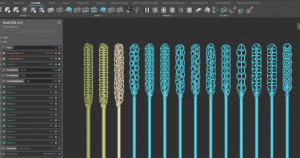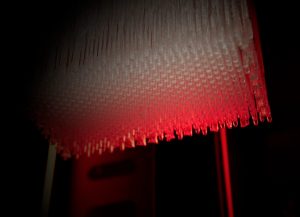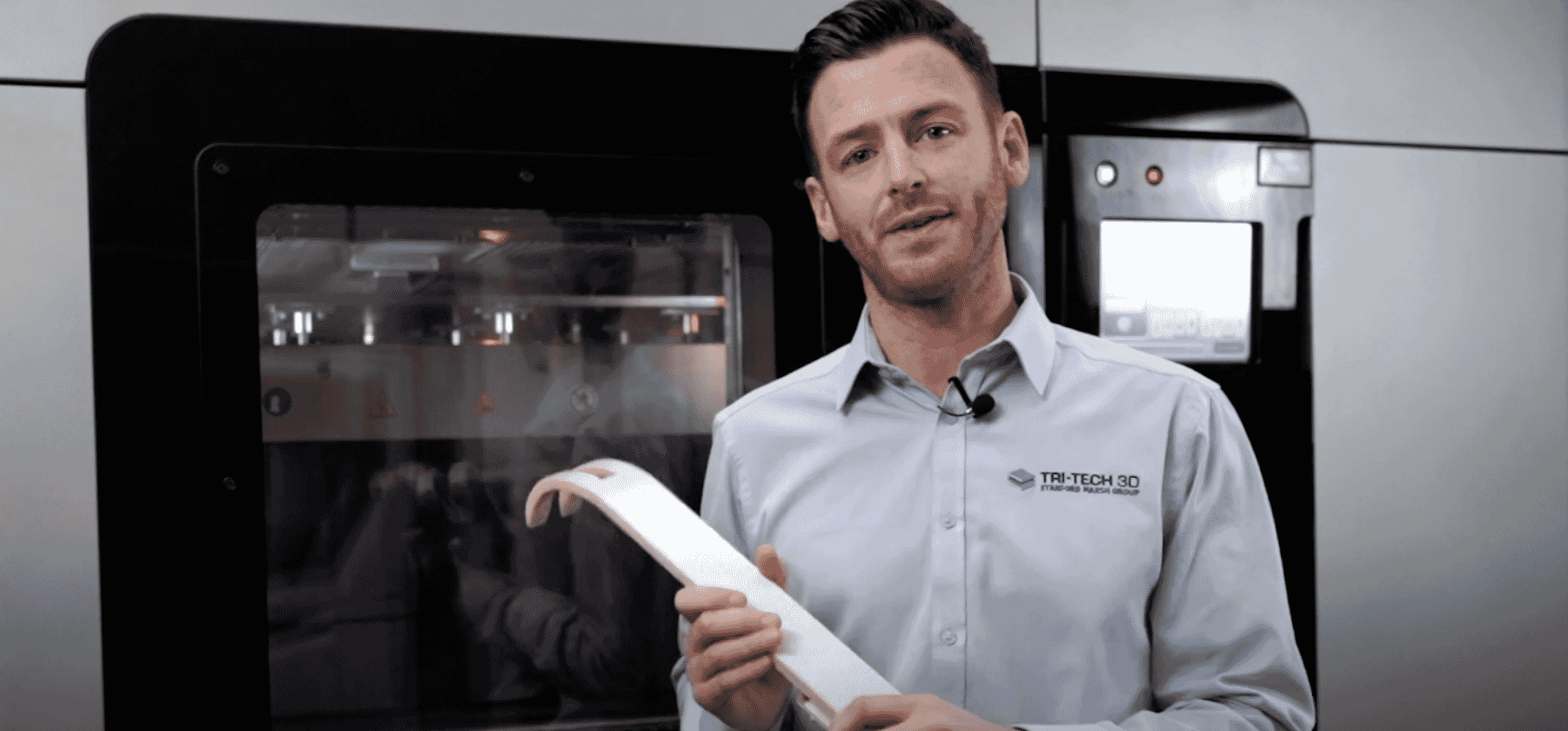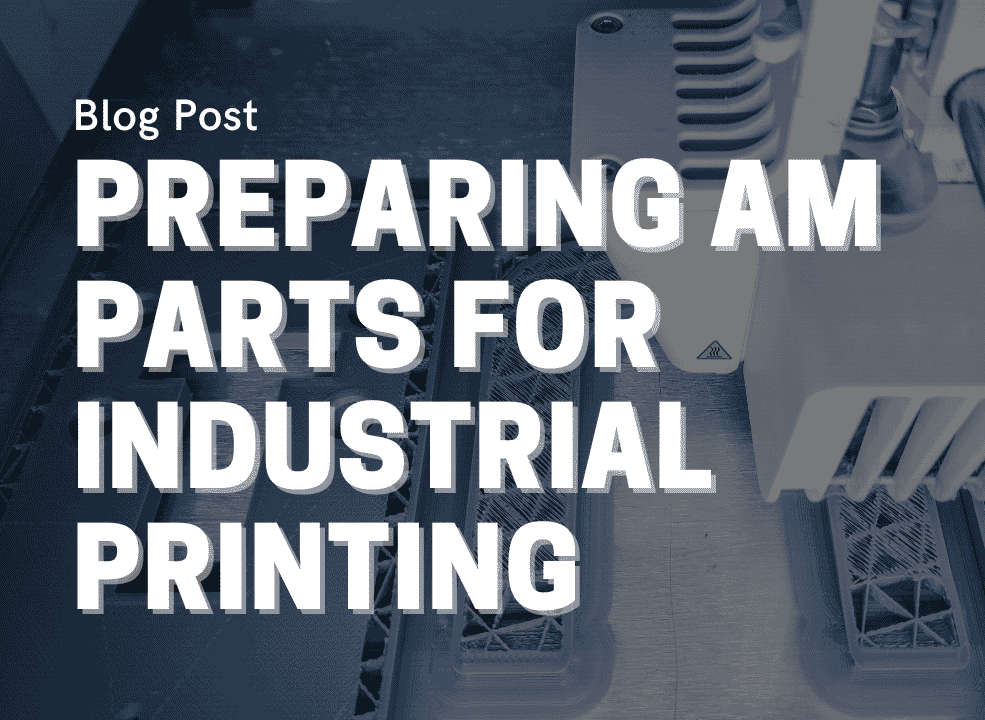Concept to high-volume production of validated 3D printed medical devices in weeks
When the COVID-19 pandemic hit, so did an urgent need for large supplies of personal protective equipment (PPE) for healthcare providers and nasopharyngeal swabs for COVID-19 testing. Supply chain disruptions immediately followed, due to complicated supply chains with overwhelmed suppliers and difficult-to-source components.
Reliance on a few vendors, instead of multiple-supplier sources, and enormous product demand made it difficult for health care providers to secure inventory and layered on additional challenges.
Increased demand and supply chain bottlenecks
Traditionally manufactured nasopharyngeal swabs have a polyester handle and a tip with tiny rayon or nylon fibers. To test for COVID-19, the swab is inserted through the nose, deep into the nasal cavity, twirled and broken off into a vial to ship to a testing lab.
- The two major manufacturers of nasopharyngeal swabs produce, assemble, sterilize and package the swabs, using proprietary manufacturing methods and equipment.
- These companies found themselves unprepared for supply chain disruptions and were unable to scale quickly to meet worldwide demand.
As with other PPE shortages, like face shields, 3D printing emerged as a novel solution with rapid product development and production capabilities that allowed for the design, prototyping, testing, and mass production of nasopharyngeal swabs made of medical-grade photopolymer materials.
Rapidly designing and validating a new swab with high efficacy
Origin (acquired by Stratasys in early 2021) set forth to produce clinically-tested, FDA-registered test swabs at scale. Origin collaborated with Henkel, Harvard’s Beth Israel Deaconess Medical Center (BIDMC), and other 3D printing leaders to develop a one-piece, FDA-compliant, sterile, 3D-printed NP test swab.

Origin was able to quickly produce many different designs for clinical evaluation at the same time, in a single build envelope. The resulting swabs are made of a single material, with no injection molding tooling or assembly required. Their lattice design makes sample collection easy and comfortable, with a breakpoint for the sample to be added to the vial and sent to the lab.
The Origin team validated the swab’s mechanical capabilities and manufacturability, while Henkel, the material provider, tested the swabs for biocompatibility and validated the complete workflow. The Origin swabs went through phase 3 human clinical trials conducted by Harvard’s Beth Israel Deaconess Medical Center (BIDMC) and were determined to have a high concordance and statistically indistinguishable from the traditional swab.

Anecdotal evidence suggests that the Origin design’s lattice tip can improve specimen collection, due to the low liquid absorption quality of the material and unique design. Longer-term, this has the potential to make less accurate diagnostics systems perform better when there is a very low viral load in the patient.
Production ramp-up
Origin dedicated its internal capacity of Origin One 3D printers to manufacturing swabs in three shifts a day, seven days a week.
- Each printer in the lab printed 800 swabs every.
- Origin shipped over half a million fully validated, packaged, and sterilized swabs in just eight weeks.
- Origin’s swab was shipped and used by healthcare providers and testing centers across the U.S.

Eventually, traditional supply chains ramped up their ability to produce higher numbers of testing swabs, and the demand for the slightly more expensive 3D printed swabs began to drop. Origin was able to slowly decrease production based on real-time demand, while restarting other company initiatives. This is a powerful example of 3D printing’s ability to react to supply chain challenges quickly and efficiently, easily increasing or decreasing production to meet demand.
Making 3D printing history
The company was able to ramp up from passing clinical trials to mass production in a matter of days, a far cry from traditional injection molding tooling lead times. Plus, it was possible to easily increase capacity by dedicating additional 3D printers to production. During the same time period, Origin’s customers also produced thousands of units of PPE, respirator components, and ventilator components, demonstrating the ability of the technology to be used for various other applications in short supply.
Stratasys Origin One’s printing technology and access to high-performance materials enable fast iterations and accelerated concept development. This makes it an ideal choice for the rapid development and production of biocompatible components, and it’s what enabled the company to swiftly lend a helping hand during an unprecedented global pandemic.

















